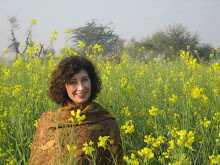 During one trip to India I took a group of women travelers for henna at a small market in New Delhi. The henna artists, armed with portfolios of their handiwork, descended on their eager clients flipping through pages filled with designs for hands, feet, forearms, ankles, calves. Once a design was selected, the artists worked quickly with deft hands, creating flowers, paisleys, and swirly decorations on various body parts.
During one trip to India I took a group of women travelers for henna at a small market in New Delhi. The henna artists, armed with portfolios of their handiwork, descended on their eager clients flipping through pages filled with designs for hands, feet, forearms, ankles, calves. Once a design was selected, the artists worked quickly with deft hands, creating flowers, paisleys, and swirly decorations on various body parts.Henna (also known as Mehndi) has been used for thousands of years. Leaves from the henna plant (Lawsonia inermis) are ground into a paste which dyes the skin. Henna artists squeeze the greenish-black paste through a cone onto the skin creating elaborate patterns. The dark paste dries, cracks and crumbles off leaving a reddish-brown design which can last up to a couple of weeks. Women in India wear henna for special occasions and celebrations. Brides are decorated with special designs on their hands and feet.

The women travelers were happy and impressed with their new body art—but no less so than the artists were impressed with Autumn's tattoos, one of the women in our group. Autumn's elaborate tattoos covered much of her neck, chest, and arms. Fortunately, the henna artists found a blank canvass on her feet.



Beautiful post!
ReplyDelete